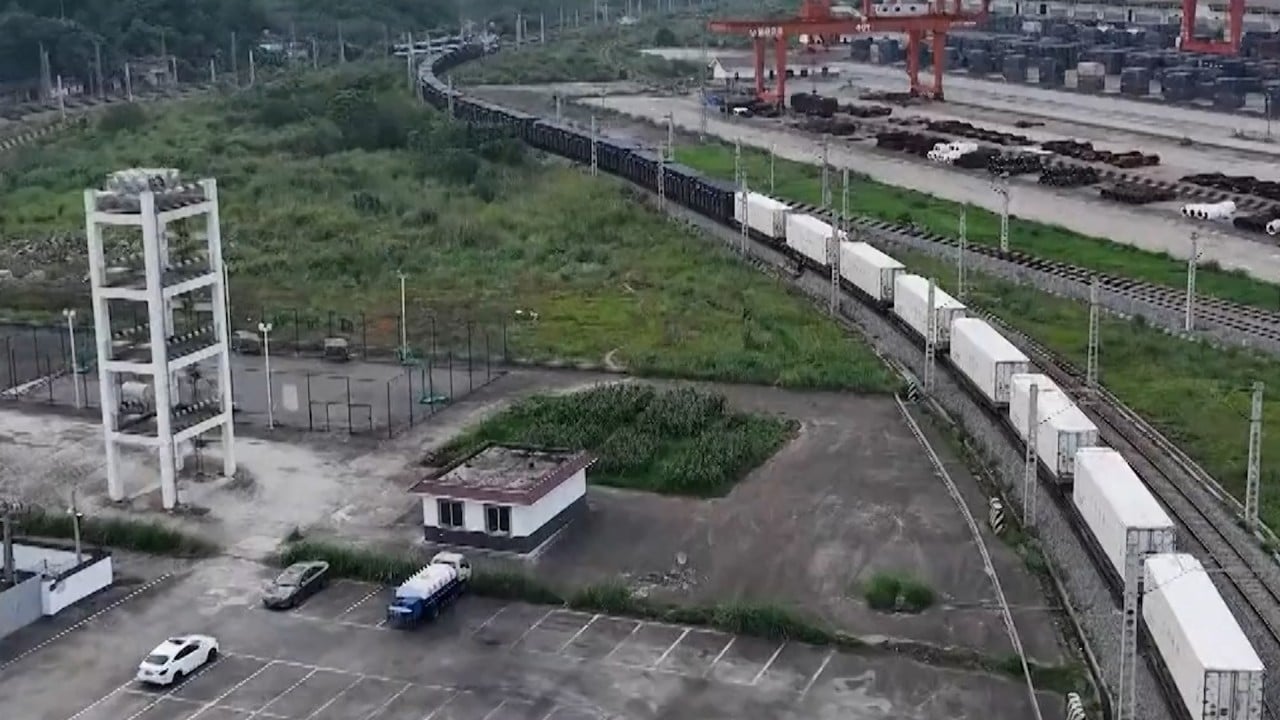Vietnam is increasing durian exports to China by using land-border shipments to control costs, a strategy that may challenge Thailand’s dominance in the market.
Cross-border shipments have surged since China formalised regular shipments of the popular, uniquely pungent fresh fruits from Vietnam a year ago.
In the first half of 2023, Vietnam exported US$876 million of durian, with US$835 million shipped to China, Vietnamese media reports said.
Trucking durians across the 1,306km (812-mile) land border will save money that should be reflected in retail prices, said Jack Nguyen, a partner at business advisory firm Mazars in Ho Chi Minh City.
They would have the advantage of volume and feasibility of transport
“They would have the advantage of volume and feasibility of transport,” Jack Nguyen said. “For sure, they’re competitive on price.”
The market potential for Vietnamese durian shipped by land has already prompted border cities in China to improve trade logistics.
China pledged to make border transport easier in January 2022, the month when the Regional Comprehensive Economic Partnership trade agreement took effect.
Advertisement
The 15-nation free-trade deal, which involves the 10-member Association of Southeast Asian Nations bloc plus China, Japan, South Korea, Australia and New Zealand, has accelerated the durian trade due to lower taxes and streamlined customs procedures.
China’s durian demand launches a thousand ships, boon for Asean exporters
China’s durian demand launches a thousand ships, boon for Asean exporters
Top-grade Vietnamese durian sells for around US$4 per kilogram in China, according to the VnExpress International media outlet in Vietnam.
Durian from other Southeast Asian nations sell for US$10 or more per kilogram, HSBC said earlier this month.
Advertisement
Durian from Thailand is known for its sweet flavour, but the land-sea shipping route to China takes a minimum of four days.
Farmers in Vietnam’s chief growing zones in the southern provinces and Central Highlands are eager to comply with China’s 76 origin codes required for cultivation and 25 for packaging durian imports, analysts said.
Advertisement
China was previously worried about pesticides and fertilisers, said Nguyen Thanh Trung, director of the Saigon Centre for International Studies at the University of Social Sciences and Humanities in Ho Chi Minh City.
It means they are trying to accelerate exports for now
Vietnamese farmers had addressed pesticide and fertiliser problems by September last year.
Advertisement
“It means they are trying to accelerate exports for now,” said Nguyen Thanh Trung, who estimated that 100 Vietnamese farmers have export permits for China.
Because durians are usually planted in hot, humid climates, they are susceptible to “pests and diseases”, agriculture-use drone developer XAG said in April.
Durians need “spraying and fertilisation” throughout the growth cycle, a process that “can be heavy in labour and fertiliser,” the statement said.
Advertisement
China’s General Administration of Customs requires Vietnamese growers and exporters to first register with Vietnam’s Ministry of Agriculture and Rural Development, the state-run Viet Nam News reported.
They get up to speed pretty quickly on these things
It wants farmers to practise “quality management” and meet “sanitary requirements”, meaning durians must reach a maturity rate of 80 per cent upon harvesting, be of almost identical weight and quality and be properly refrigerated.
Durian is grown on 110,300 hectares (272,557 acres) in Vietnam, up from 37,000 hectares in 2017, VnExpress International said.
“They get up to speed pretty quickly on these things,” said Frederick Burke, a Ho Chi Minh City-based senior adviser with law firm Baker McKenzie. “Farmers will say, ‘yeah, China, let’s go for it.’”
Agriculture is leading other export categories this year because of China-bound durian, said Ralf Matthaes, founder of Infocus Mekong Research consultancy in Ho Chi Minh City.
It is in turn leading other export categories from the country that is better known for its manufactured goods, he added.
Can China bring down local durian prices as it reaps first large-scale harvest?
Can China bring down local durian prices as it reaps first large-scale harvest?
But Vietnamese officials hope to eventually avoid over-reliance on the Chinese market in case other problems disrupt trade, analysts said.
China and Vietnam dispute sovereignty over tracts of the South China Sea, leading to periodic maritime stand-offs.
The visit by US President Joe Biden to Vietnam this week could also rile Beijing if the “two sides strengthen their strategic ties” to resist China’s role in Asia, said Alexander Vuving, a professor at the Daniel K. Inouye Asia-Pacific Centre for Security Studies in Hawaii.
Chinese authorities stopped thousands of Vietnamese trucks at the border for weeks in December 2021 and again in March 2022 due to coronavirus restrictions.
“China now has the power of buying,” Nguyen Thanh Trung said. “They’re the biggest buyer in the world. So that’s the reason we worry about over-reliance.”
Advertisement
"trade" - Google News
September 12, 2023 at 04:00AM
https://ift.tt/kGa05SV
‘China, let’s go for it’: Vietnam ups durian trade as land border cuts costs - South China Morning Post
"trade" - Google News
https://ift.tt/i5ANvow

Tidak ada komentar:
Posting Komentar